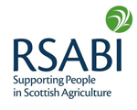With the advent of more and more manufacturers producing direct drills, we look at the pros and cons of direct drilling grass and forage crops.
There are many reasons for direct drilling, some are:
• Conserving moisture
• Reducing erosion
• Reducing compaction
• Reduction in fuel and labour
• Reduced greenhouse emissions
We can also argue that there are some disadvantages:
• An increased dependence on herbicides
• Crops are more susceptible to slugs and insects
• Crops are slightly slower to establish
• Not every field or every farm would suit direct drilling.
There are various designs, from double disc to disc and T boot and spring tine designed 5 in 1 system. Everyone has their own opinion, and it may also depend on which machine the nearest contractor has in his fleet.
Some have spacings of up to 152 mm, if you want to use a drill with this spacing, it will have to be used in two different directions to create a thick enough sward. Whilst a spacing of 152 mm won’t reduce yield compared to a conventionally sown sward, the wide gap will ultimately fill up with weed species, and in turn reduce quality and increase herbicide use. If you can use a drill with narrower spacing, this will reduce the number of passes in the field, resulting in huge saving in fuel, labour, machinery costs and a reduction in chemical costs.
No matter which drill you choose, weed control on the lead up to reseeding will be more important than ever and the risk of pest damage increases too. Crop monitoring is imperative to have a more cost effective and environmentally conscious system.




